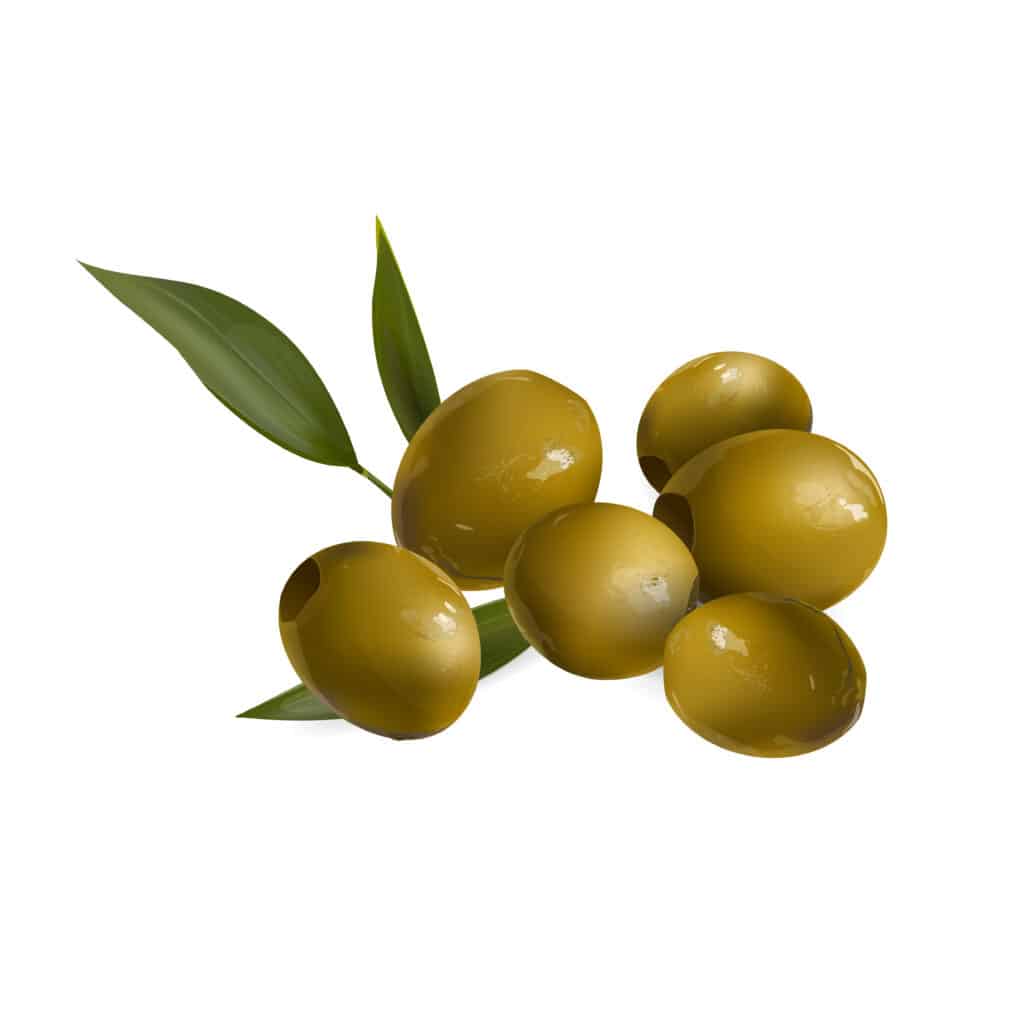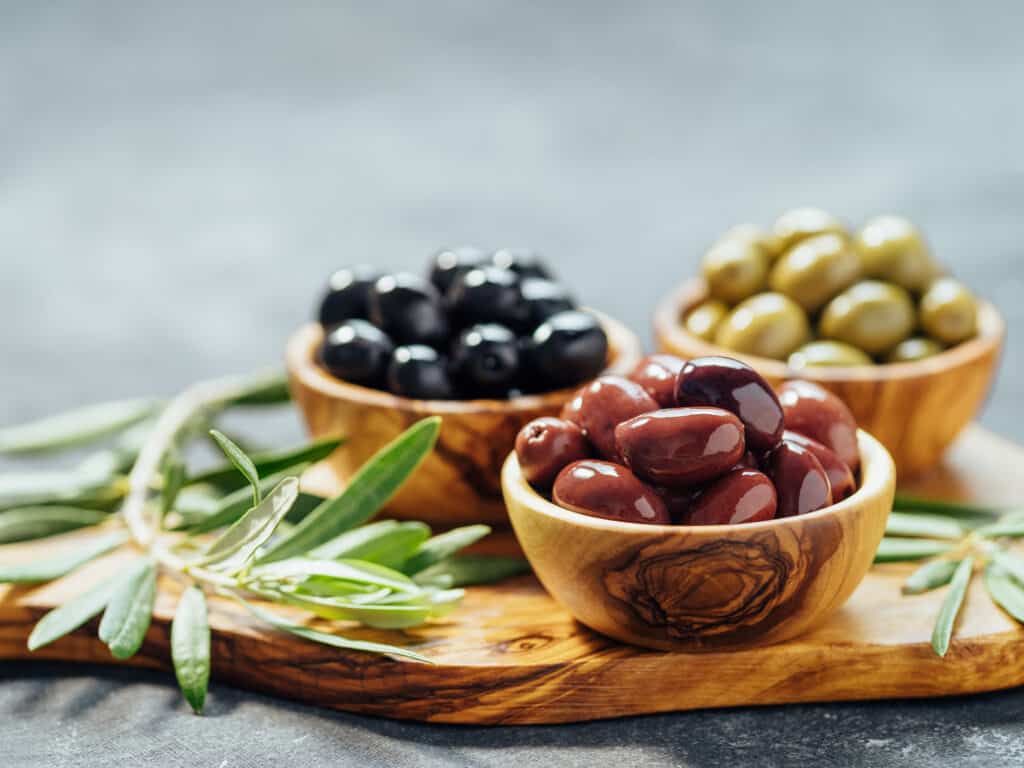Olive trees generate olives (Olea europaea). Olives are an excellent source of vitamin E and other antioxidants. They taste great in spreads, salads, and sandwiches. Studies show that olives promote heart health and may prevent cancer and osteoporosis. Sometimes green, immature olives change to black as they ripen, while others stay green. Olive oil, a common commodity, is produced from 90% of the olives planted in the Mediterranean region. But what exactly is an olive? Is an olive a fruit or a vegetable? Look no further to learn all about Olea europaea.

Olives grown on rather large trees, like this ancient beauty located in Croatia.
©iStock.com/Carter Wilson
Botanically Speaking, An Olive Is Considered A Fruit
According to Encyclopedia Britannica, a fruit is the dry or fleshy developed ovary of a flowering plant, encompassing the seed or seeds. Therefore, olives are fruit since they are created by the olive tree’s flower. Olives are known as drupes, or stone fruits, along with mangoes, peaches, cherries, pistachios, and almonds. So, under the right circumstances, planting an olive pit in the ground will produce a slow-growing tree that is remarkably resilient!
Though fruits are traditionally though of as sweet, botanically speaking, what distinguishes a thing as a fruit, (or a vegetable) is actually determined by science. Although fruits and vegetables are classified differently for various reasons, from a scientific standpoint, it is not related to their flavor. For most chefs and everyday people however, classifying an olive as a fruit isn’t very helpful. That is why in the culinary world, they tend to be classified differently. So, what’s the culinary definition of an olive?

For most chefs and everyday people however, classifying an olive as a fruit isn’t very helpful.
©ConceptCafe/Shutterstock.com
The Culinary Classification for Olives
Olives are often called vegetables in the culinary world, so it makes sense that regular folk would refer to olives as vegetables, too.
Gardeners, on the other hand, tend to understand which foods contain seeds and which ones don’t, and as such refer to tomatoes and olives as fruits.
Typically, fruits are sweet, soft, juicy. They are frequently ingredients in desserts and other sweet treats. Any competent cook is aware that using tomatoes in a fruit salad is not the best idea, and the thought of adding an olive to a cake is just disturbing. Making a savory dish with olives, however, is delicious. Even if it isn’t scientifically accurate, one of the most fundamental distinctions between fruits and vegetables in the kitchen is that fruits are sweet, and veggies are savory.

The nutritional value of an olive is substantial despite its small size.
©iStock.com/Fascinadora
A Tiny Fruit With Many Health Benefits!
Healthy Fat
The nutritional value of an olive is substantial despite its small size. Though olives have a high fat content, they are low in calories. And fat is not always a negative. In fact, when used in moderation, healthy fats, like those found in olive oil, can be extremely beneficial. The fat of an olive is in the form of oleic acid, a monounsaturated omega-9 fatty acid. Oleic acid is the primary component of olive oil. Oleic acid benefits health in several ways, including potentially lessening inflammation and lowering the risk of heart disease. Studies show it can even help fight cancer!
Vitamins and Minerals
Containing a variety of vitamins and minerals, a few of which are introduced during processing, olives have many beneficial components include:
Copper: This essential mineral is commonly lacking in the typical Western diet. A copper deficiency may increase your risk of heart disease.
Iron: Black olives are a great source of iron, which your red blood cells need to transport oxygen.
Vitamin E: Plant sources high in fat, such as olives, usually include this powerful antioxidant.
Antioxidants
Olives are rich in antioxidants including:
Oleanolic acid: This anti-inflammatory may reduce inflammation and protect the liver.
Oleuropein: This antioxidant is most frequently found in young, unripe olives. It is said to improve cardiac function and lower blood pressure among other beneficial health effects.
Quercetin: This vitamin may help control blood pressure and improve heart health.
Tyrosol: This is a common antioxidant found in olive oil that has potential anti-cancer properties.
Olives are tasty, savory fruits that are filled with health benefiting fatty acids and antioxidants. Delicious on their own as a snack, they are also a perfect addition to a variety of dishes. So, then next time you’re hankering for a healthy treat, consider the small but mighty olive!
Up Next:
- Can Dogs Eat Olives Safely?
- Can Dogs Eat Olive Oil?
- Is a Date a Fruit or a vegetable?
- 6 Vegetables to Plant in December
- Is Lime A Fruit Or Vegetable? Here’s Why
- Is Pepper A Fruit Or Vegetable? Here’s Why
The photo featured at the top of this post is © iStock.com/Almost Green Studio
Sources
- health line, Available here: https://www.healthline.com/nutrition/foods/olives
- Wikipedia, Available here: https://en.wikipedia.org/wiki/Olive
- treehugger, Available here: https://www.treehugger.com/fruits-you-think-vegetables-4868744
- plantfoodathome, Available here: https://www.plantfoodathome.com/olives-fruit-or-vegetable/
Thank you for reading! Have some feedback for us? Contact the AZ Animals editorial team.






